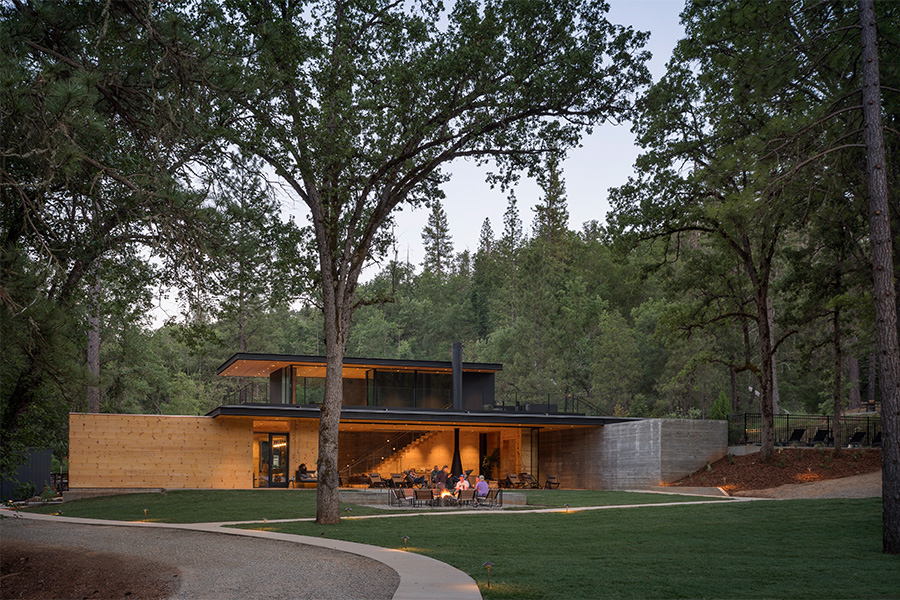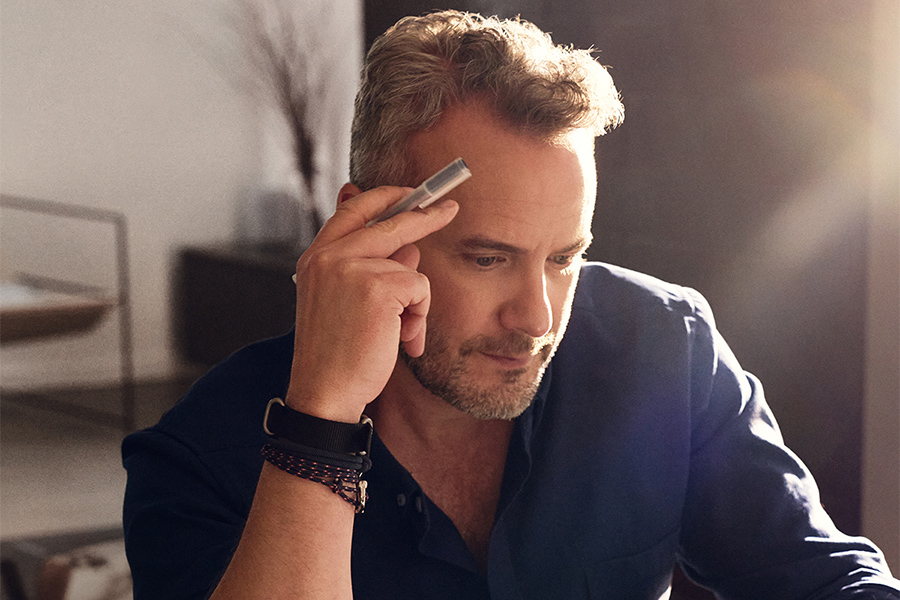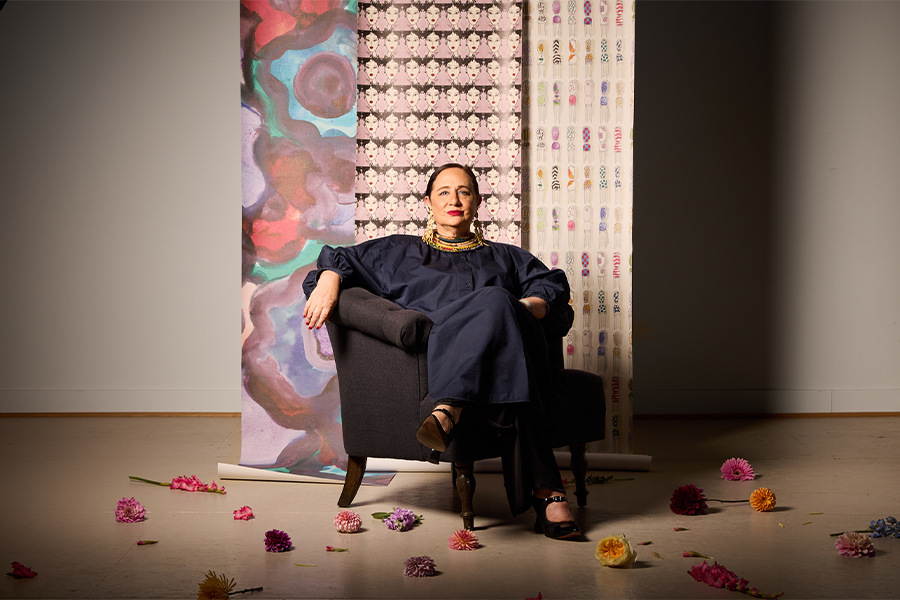In less than a decade, AutoCamp has established itself as a hospitality juggernaut, taking glamping to new heights. Much of the experiential hospitality company’s rapid expansion can be credited to chief brand officer Ryan Miller. He met AutoCamp CEO Neil Dipaola (who is also founder of Mesa Lane Partners, a fully integrated real estate investment, development, management, and hospitality company) after his friend forwarded him a posting for a marketing and social media position for Dipaola’s LEED-certified student housing development called the Loop at UC Santa Barbara. (With Miller’s help, the property sold out before it opened in 2012.) It was the impetus for their future partnership in many ways. “There were so many parallels with that project and AutoCamp, especially in the early days,” Miller says. “We were using a renovated vintage Airstream for the marketing. That was my first experience appreciating how cool they were. Once that project was wrapping up, Neil came to me and introduced this idea of building an Airstream hotel. That was the beginning of AutoCamp.”
This past year, as COVID-19 ravaged the travel industry, AutoCamp destinations became more coveted than ever as people sought escape and solitude. Since the first location in Santa Barbara, which has since closed, AutoCamps have opened in California’s Russian River Valley and Yosemite National Park—both the handiwork of San Francisco studio Geremia Design and Santa Barbara firm Anacapa Architecture.

Complete with an outdoor patio and beautiful views, the 31-foot-long Airstream Vista suite is tucked away in a secluded corner of AutoCamp Yosemite in California
Next up: Workshop/APD-designed sites in Cape Cod, Massachusetts (opening this month) and the Catskills, New York (debuting spring of 2022); as well as outposts in Joshua Tree, California and Zion National Park in Utah (set to open this fall and next spring, respectively, both created by HKS Architects and San Francisco-based Narrative Design Studio). They bring the pioneering luxury camping company’s roster to six locations. Further, Miller says the company hopes to open an additional 25 to 30 properties in the U.S. over the next five years.
Here, the Saatchi & Saatchi alum shares the company’s early beginnings, the emergence of camping as a luxury experience, and how AutoCamp became a balm for many during these distressing times.
How did your experience with the Loop turn into AutoCamp?
[After the Loop opened], I was at lunch with Neil, and he said, ‘I’ve been working on [acquiring this campground] for a while. I think this project is something you’re going to love.’ I was early in my career at that point and had nothing to lose. I was enthused about it because it was so unique. It was so quick to acquire the property in Santa Barbara [it took about six months] that we didn’t have a real operational or marketing plan. It was right around Christmas 2012 when we brought the Airstreams on and we were like, ‘Wow! We have an Airstream hotel now.’ We built a basic website and had a broken booking platform and all of our phone calls were going to my cell phone. We listed it on Airbnb as well. It wasn’t clearly a [traditional] hotel, and we were also [tossing around] the idea that it would be housing for creative professionals who were tired of apartment living. There were multiple ideas brewing. Before we were ready to open, people would walk by and ask, ‘Can I stay here?’ That was when we solidified the idea that this is a lodging play, and we leaned into that.

From Anacapa Architecture and Geremia Design, AutoCamp Yosemite features a two-story clubhouse clad with sealed pine, blackened steel, and board-formed concrete
How did you initially retrofit the Airstream interiors?
Initially, it was all vintage Airstreams. We gutted them inside to create a minimalist, California modern interior. In Santa Barbara, we pioneered our current floorplan, which is a compartmentalized bathroom/living space/kitchen in the center and a private bedroom with a queen bed. We introduced the new Airstream when we opened Russian River Valley in 2016. That was a big transition because the vintage Airstreams aren’t operationally scalable. From a production standpoint, we have 88 Airstreams in Cape Cod and 81 in Yosemite. It’s a whole new level. We’re on the 10th version of the Airstream because we keep upgrading systems.
How did the brand grow from there?
When we first opened the property in Santa Barbara, we knew we wanted to open more AutoCamps. It had such magic to it. There were a couple years of trial and error and honing in on what the concept is. We were looking at all sorts of unique ways to deploy Airstreams and do AutoCamps. The most notable was using underutilized urban spaces like rooftops and parking garages. We went down that path for probably 18 months. There was a moment in early 2015 when we realized this urban model wasn’t stacking up, and we had our great pivot at that point: This is an outdoors concept.

Opening this fall in California, AutoCamp Joshua Tree’s clubhouse is a modern take on traditional Quonset huts, courtesy of HKS Architects and Narrative Design Studio
After throwing away your initial blueprint, what were you looking for in the next location?
I didn’t really know what it was until I saw it. That’s when I landed in Guerneville, California on the Russian River. It was the perfect size. It’s 35 licensed campground spots, which was larger than we had done in Santa Barbara. I saw the whole vision coming together. Neil found different reasons to love this area, mainly the town. Being adjacent to cool towns has always been important to us. We want to be in places that are explorable and have amenities, and Guerneville checked those boxes.
That’s also when the clubhouse became what it is. We put this huge wishlist together: We need a place for people to check in. We want to have a place for morning coffee service. We wanted a lobby culture. We now have an all-day dining menu and a general store. We looked at various [ideas for the design], but when we saw the flat roof, midcentury modern, indoor/outdoor pavilion drawn up, [we knew] that was the direction we had to go. The site is built around that. We’ve been working with the same general concept since then.

In addition to two dozen Airstream trailers, 10 canvas tents are nestled among the redwoods at AutoCamp Russian River by Geremia Design and Anacapa Architecture
Part of our ethos is community and we feel we can build connection in the design. In our upcoming projects, there is definitely a balance between the AutoCamp brand standards and the local aesthetic. That’s evident at Joshua Tree, where we are doing twin Quonset hut buildings [as the] clubhouse. It’s a big leap.
How has the last year been for AutoCamp?
COVID-19 has accelerated the adoption and interest in outdoor hospitality. People are looking for that health- and wellness-focused vacation where they can come home feeling better and more rejuvenated than when they arrived. It’s easy for us to make sure these experiences are safe. Despite mandated closures for statewide stay-at-home orders, we had a record booking year in 2020. It confirmed how strong our business model is, and also how much impact we can make on people’s lives. We read all the guest comments and it’s amazing to see, especially after a year of COVID, [whether it’s a] solo getaway or a family trip, that this is the thing they needed. They practically write love letters.

From Workshop/APD, the clubhouse at AutoCamp Cape Cod, Massachusetts is wrapped in charred and natural cedar
This article originally appeared in HD’s April 2021 issue.
More from HD:
4 Elevated Cabins Make a Strong Case for Disconnecting
The 36 Most Anticipated Hotel Openings of 2021
Forward Thinkers: 6 Hospitality Leaders Embrace the Future


